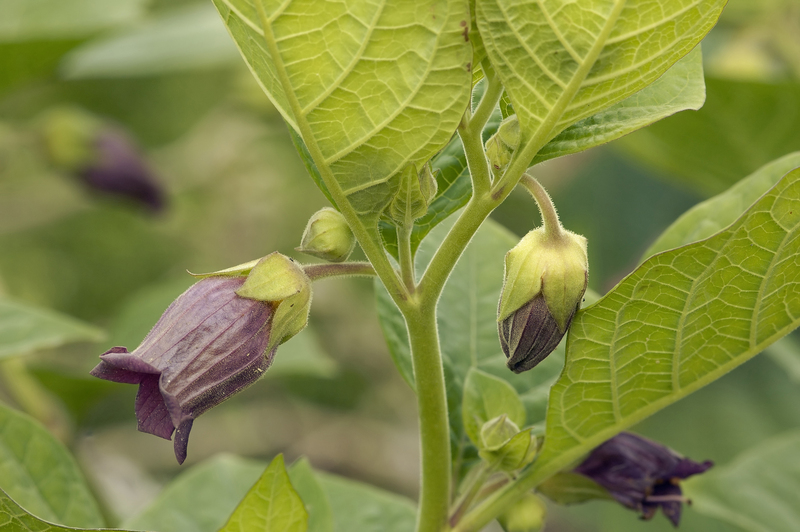The Ultimate Guide: 3 Tips for Weed-Free Gardening
Posted on 29/05/2025
The Ultimate Guide: 3 Tips for Weed-Free Gardening
Are you tired of spending countless hours kneeling in your flowerbeds, pulling out stubborn weeds that seem to reappear overnight? A weed-free garden is not just a dream--it's entirely possible with the right approaches. In this comprehensive guide, we'll explore the ultimate strategies for weed-free gardening. We'll cover three powerful tips to help you eliminate unwanted plants and maintain a healthy, thriving landscape. Whether you're a beginner or a seasoned horticulturist, these practical steps will make your gardening experience more enjoyable and rewarding!
Why is Weed-Free Gardening Important?
Weed control is essential for any gardener. Unwanted plants compete with your desired crops and flowers for water, nutrients, sunlight, and space. Left unchecked, weeds can quickly overrun your garden and stifle the growth of your prized plants. Moreover, some invasive weeds can even attract pests or harbor diseases.
A weed-free garden means:
- Better yields and healthier plants
- Less time spent on maintenance
- Improved aesthetics and curb appeal
- Reduced need for chemical herbicides
Implementing a few proactive steps today will save you headaches tomorrow. Let's dig into the core methods that professional landscapers and experienced gardeners rely on to cultivate weed-resistant spaces.

Tip #1: Harness the Power of Mulch for Weed-Free Gardens
If there is one secret weapon in the battle against garden weeds, it's mulch. Applying a layer of mulch over exposed soil effectively blocks sunlight, preventing weed seeds from germinating and breaking through to the surface. This not only suppresses weeds, but also conserves soil moisture and improves soil health as organic mulch breaks down.
Types of Mulch for a Weed-Resistant Garden
- Organic mulches: Wood chips, bark, straw, grass clippings, shredded leaves, and compost add nutrients to the soil while smothering weeds.
- Inorganic mulches: Gravel, black plastic, and landscape fabric offer long-lasting weed prevention but don't enrich the soil.
How to Apply Mulch Effectively:
- Clear the area of any visible weeds before mulching.
- Spread a layer of mulch, 2-4 inches deep, over the soil surface around your plants.
- Leave a small gap around plant stems to prevent rot.
- Check for bare spots periodically, and replenish mulch as needed, especially after heavy rain or wind.
Proper mulching is a sustainable and low-maintenance way to enjoy weed-free gardening beds all season long.
Tip #2: Plant Densely to Outcompete Weeds Naturally
Another highly effective method for maintaining weed-free soil is strategic planting. By choosing ground covers and spacing your plants closer together, you leave fewer opportunities for weeds to take root. A dense, healthy garden canopy literally shades out weed seedlings, depriving them of the light they need to survive.
Choosing the Right Plants for Weed Suppression
- Low-growing groundcovers like creeping thyme, sedum, or clover act as living mulch.
- Vigorous perennials: Plants such as daylilies, hostas, or ornamental grasses quickly form thick clumps that block weed growth.
- Companion planting: Use fast-growing annual crops to shade soil between slower-growing plants.
Tips for Dense Planting:
- Reduce the space between transplants compared to conventional spacing guides.
- Stagger your plants in triangular patterns, rather than straight rows, to maximize ground coverage.
- Fill empty spots with fast-growing annuals or herbs.
- Rotate your crops to keep the soil healthy and less susceptible to weed invasion.
Dense planting is an organic, eco-friendly way to achieve a weed-free vegetable garden or perennial border.
Tip #3: Master Regular Weeding and Prevent New Weed Growth
While mulch and dense planting do wonders, some weeds are inevitable. Staying ahead of them with consistent hand-weeding and preventative measures is crucial for long-term weed-free gardening.
Efficient Weeding Techniques
- Weed when the soil is moist: Roots slide out much more easily, so aim for after a rain or water beforehand.
- Pull weeds while they're young: Small seedlings haven't established deep roots and are simpler to remove.
- Remove the entire root: Many perennial weeds will regrow from leftover root fragments.
- Use the right tools: Hand forks, hoes, and specialized weeders make the job easier and reduce soil disturbance.
Prevention: Keeping New Weeds from Sprouting
- Never let weeds go to seed; one dandelion can produce thousands of seeds for future headaches.
- Install edging or barriers to prevent weed encroachment from lawns or wild areas.
- Apply a layer of pre-emergent herbicide (if you choose organics, corn gluten meal can be effective for lawns).
- Avoid tilling unless absolutely necessary--tilling can bring buried weed seeds to the surface and stimulate germination.
With some diligence, you'll notice fewer weeds popping up every season, making it easier to keep your landscape beds weed-free.
Bonus: Additional Weed-Free Gardening Tips
If you're dealing with persistent or invasive weeds, here are more advanced strategies for a truly weed-free yard:
- Solarize your soil: During hot months, cover infested areas with clear plastic for 4-6 weeks to kill weed seeds via high temperatures.
- Smother with cardboard or newspaper: Before mulching, lay down a thick layer of biodegradable barriers to block even the toughest weeds.
- Choose weed-resistant plants: Natives and adapted species often crowd out weeds with ease.
- Mulch pathways: Stone, bark, or gravel walkways between beds prevent weeds from advancing into your garden zones.
Common Weeding Mistakes to Avoid
- Over-tilling: Excessive turning and disruption of your soil only encourages dormant weed seeds to sprout.
- Ineffective mulching: Using too thin a layer allows weeds to push through; suppress them with 2-4 inches of coverage.
- Neglecting borders: Failing to maintain edges lets weeds creep in from surrounding areas.
- Ignoring small weeds: Tiny weeds grow fast--if you ignore them now, you'll regret it later.
The Lasting Benefits of Weed-Free Gardening
Achieving a weed-free flower garden or vegetable patch doesn't just look beautiful--it elevates the health of your plants and saves you hours of backbreaking labor. As your weed population drops, you'll find gardening becomes more productive and enjoyable. There's a sense of satisfaction that comes from maintaining an orderly, lush, and thriving landscape.
In summary, the main takeaways for successful weed-free gardening are:
- Mulch early and deeply
- Plant densely to crowd out invaders
- Stay vigilant with hand-weeding and proactive prevention

Frequently Asked Questions About Weed-Free Gardening
How often should I mulch to keep weeds away?
Replenish your mulch as needed--at least once per year, or whenever you notice patches thinning out. Organic mulches may break down faster than inorganic types, so keep an eye on their depth.
Can I use landscape fabric to create a weed-free area?
Yes, landscape fabric, when correctly installed, can help prevent weeds; however, some determined weeds can grow through or above the fabric. A good thick layer of mulch on top will increase effectiveness and improve aesthetics.
What's the best way to remove weeds without chemicals?
The combination of hand-pulling, mulching, and dense planting is your best bet for organic weed-free gardening. For large infestations, smothering or solarization are excellent non-chemical options.
Is there a way to prevent weeds in raised beds and containers?
Absolutely! Use high-quality, sterile potting mixes, mulch the surface, and hand-weed any troublesome sprouts. Installing weed barriers beneath raised beds can further shield them from encroaching weeds.
Conclusion: Make Weed-Free Gardening Your Reality
Transforming your garden into a weed-free sanctuary requires a blend of smart prevention, hands-on care, and regular attention. By implementing these three proven weed-control tips--mulching, dense planting, and consistent weeding--you'll enjoy vibrant, productive, and low-maintenance gardening spaces for years to come.
Ready to reclaim your time and enjoy the beauty of truly weed-free gardens? Start applying these strategies today, and watch your outdoor oasis flourish without the hassle of unwanted weeds!

